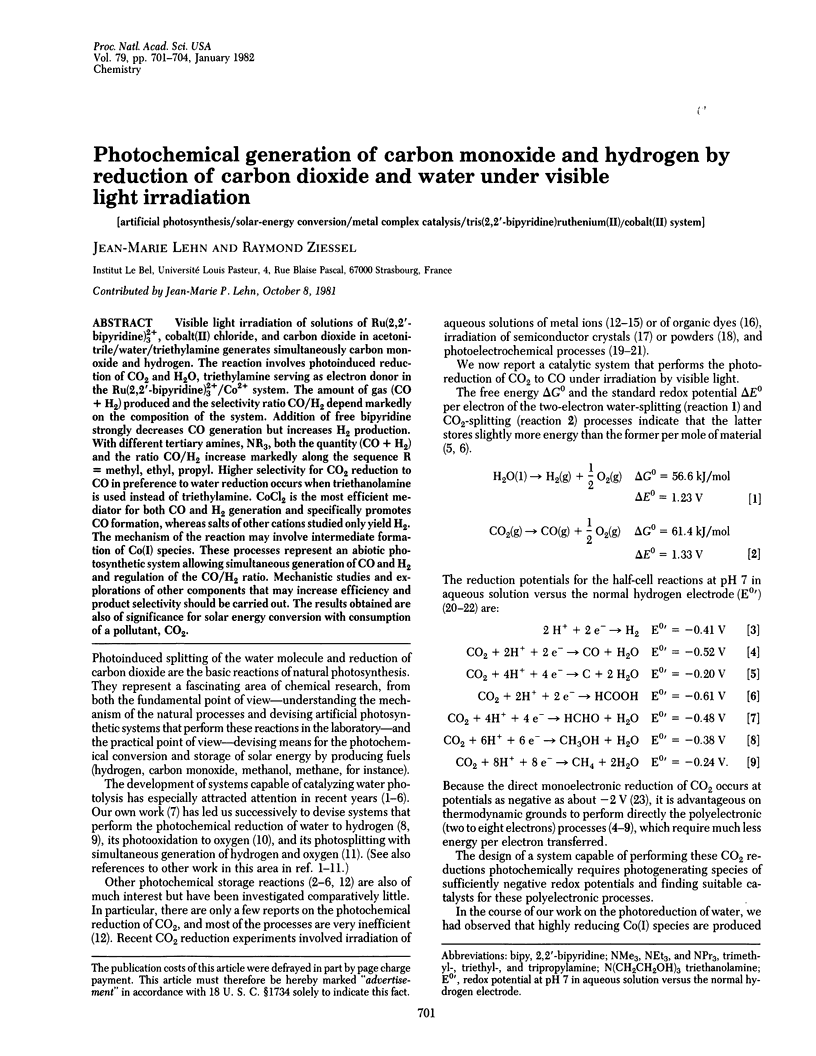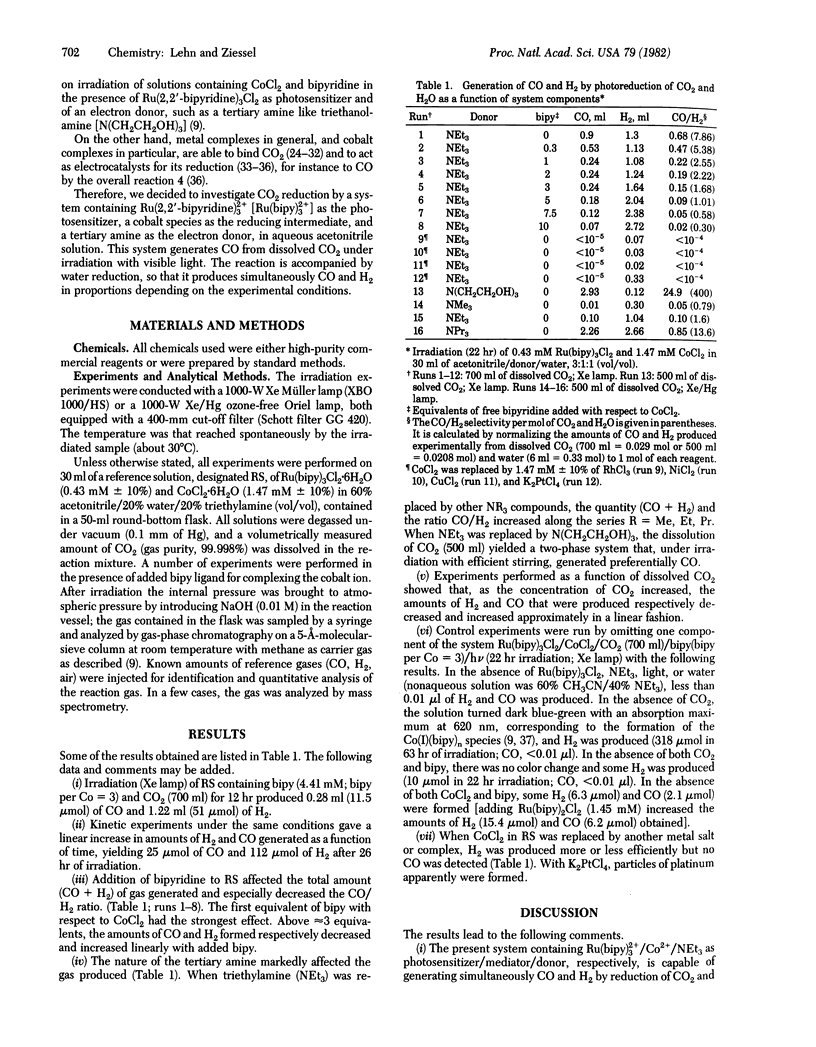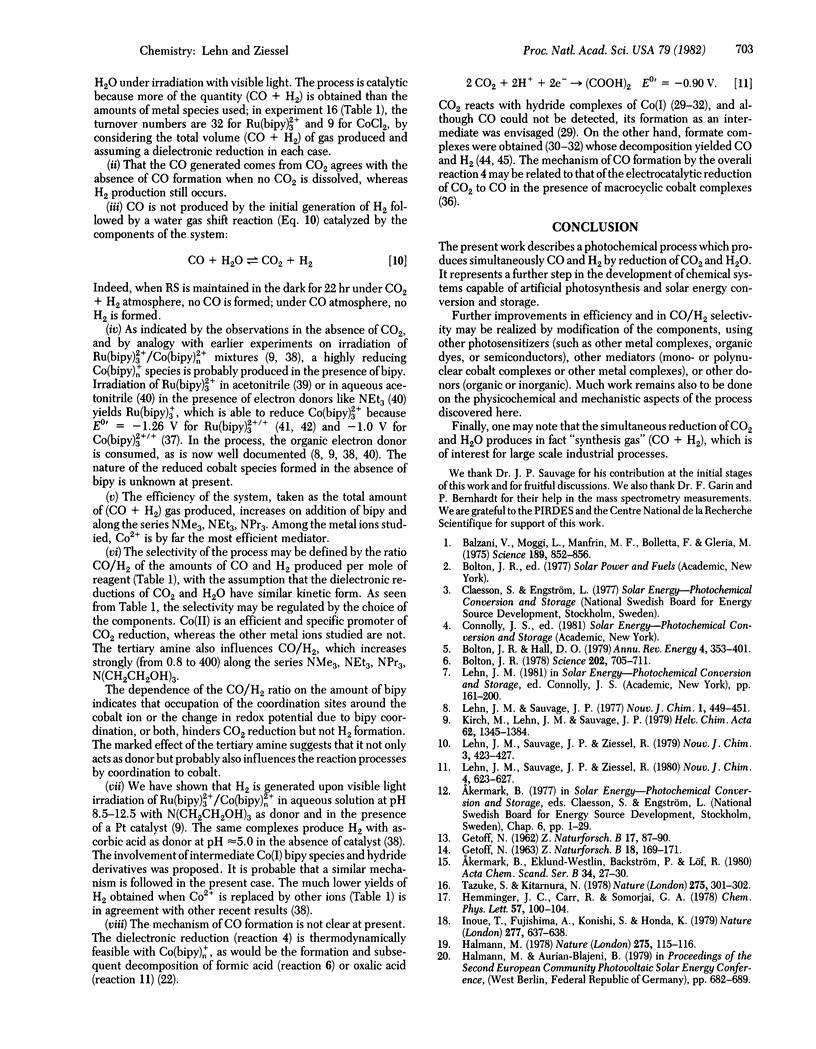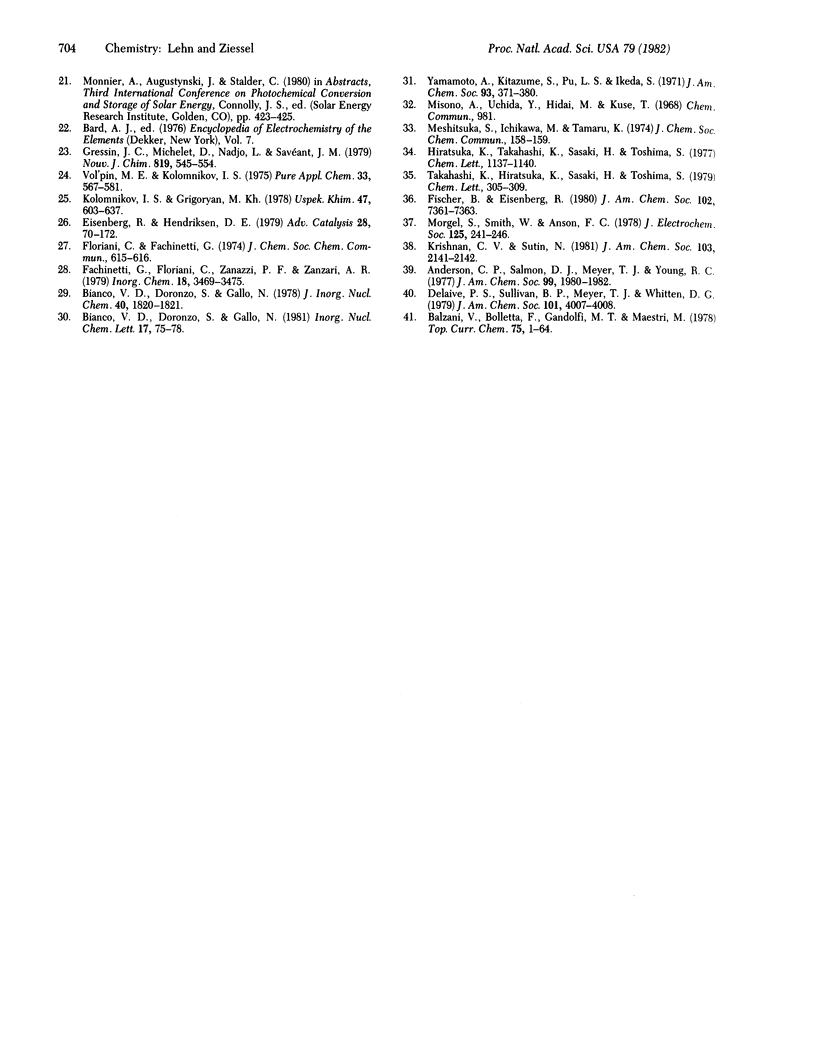Abstract
Visible light irradiation of solutions of Ru(2,2′-bipyridine)32+, cobalt(II) chloride, and carbon dioxide in acetonitrile/water/triethylamine generates simultaneously carbon monoxide and hydrogen. The reaction involves photoinduced reduction of CO2 and H2O, triethylamine serving as electron donor in the Ru(2,2′-bipyridine)32+/Co2+ system. The amount of gas (CO + H2) produced and the selectivity ratio CO/H2 depend markedly on the composition of the system. Addition of free bipyridine strongly decreases CO generation but increases H2 production. With different tertiary amines, NR3, both the quantity (CO + H2) and the ratio CO/H2 increase markedly along the sequence R = methyl, ethyl, propyl. Higher selectivity for CO2 reduction to CO in preference to water reduction occurs when triethanolamine is used instead of triethylamine. CoCl2 is the most efficient mediator for both CO and H2 generation and specifically promotes CO formation, whereas salts of other cations studied only yield H2. The mechanism of the reaction may involve intermediate formation of Co(I) species. These processes represent an abiotic photosynthetic system allowing simultaneous generation of CO and H2 and regulation of the CO/H2 ratio. Mechanistic studies and explorations of other components that may increase efficiency and product selectivity should be carried out. The results obtained are also of significance for solar energy conversion with consumption of a pollutant, CO2.
Keywords: artifical photosynthesis; solar-energy conversion; metal complex catalysis; tris(2,2′-bipyridine)ruthenium(II); cobalt(II) system
Full text
PDF



Selected References
These references are in PubMed. This may not be the complete list of references from this article.
- Balzani V., Moggi L., Manfrin M. F., Bolletta F., Gleria M. Solar Energy Conversion by Water Photodissociation: Transition metal complexes can provide low-energy cyclic systems for catalytic photodissociation of water. Science. 1975 Sep 12;189(4206):852–856. doi: 10.1126/science.189.4206.852. [DOI] [PubMed] [Google Scholar]
- Bolton J. R. Solar fuels. Science. 1978 Nov 17;202(4369):705–711. doi: 10.1126/science.202.4369.705. [DOI] [PubMed] [Google Scholar]


